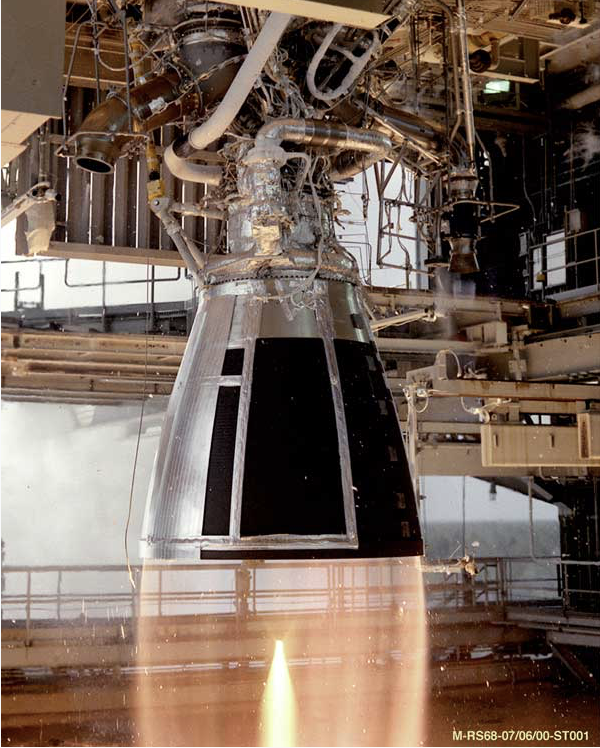
Aerojet Rocketdyne provided several propulsion systems to support the launch and operations of this next-generation GPS III satellite.
A new U.S. Air Force Global Positioning System (GPS) satellite, built by Lockheed Martin and known as GPS III Space Vehicle 02 (GPS III SV02), successfully launched on August 22 aboard a United Launch Alliance (ULA) Delta IV rocket. GPS III SV02 is the second of up to 32 planned GPS III satellites which will help the Air Force modernize the GPS constellation with new technology and advanced capabilities.

An RS-68 engine undergoing hot-fire testing at NASA's Stennis Space Center during its developmental phase.
The mission began when Aerojet Rocketdyne’s RS-68A engine ignited to provide more than 705,000 pounds of liftoff thrust that helped boost the Delta IV rocket off the pad. Following the boost phase of the flight, a single RL10B-2 engine ignited to provide 24,750 pounds of thrust to power the upper stage into orbit. Twelve Aerojet Rocketdyne MR-106H monopropellant (hydrazine) thrusters packaged in four modules on the Delta IV upper stage provide roll, pitch and yaw control as well as propellant settling burns. ARDÉ, a subsidiary for Aerojet Rocketdyne based in New Jersey, furnishes 14 pressurant tanks for the vehicle.
This launch marked the final mission for ULA’s highly-successful Delta IV Medium rocket. The more powerful Delta IV Heavy rocket will remain in production to meet the nation’s heavy-lift launch requirements until the next generation of U.S. heavy-lift launch vehicles are certified to carry payloads to orbit. The Delta IV Heavy is currently the only launch vehicle certified to fly the nation’s heaviest Category C national security payloads.
Eileen Drake, the company’s CEO and president Aerojet Rocketdyne has provided onboard propulsion for every GPS satellite since the program’s inception some four decades ago. That’s more than 70 satellites for one of the nation’s most important space programs. They also provided the propulsion systems that powered the vast majority of the launch vehicles that placed these satellites into orbit.
The GPS III SV02 satellite, built by Lockheed Martin for the Air Force, uses Aerojet Rocketdyne thrusters for orbit maintenance and adjustment, attitude control and end-of-life decommissioning. The spacecraft is equipped with 12 Aerojet Rocketdyne MR-103G thrusters, each generating 0.2 pounds of thrust, and six MR-106L thrusters, each producing 5 pounds of thrust.
Lockheed Martin is under contract to develop and build up to 32 GPS III/IIIF satellites for the Air Force. GPS III will deliver three times better accuracy and provide up to eight times improved anti-jamming capabilities. GPS III is the first GPS satellite to broadcast the new L1C civil signal to be interoperable with other international global navigation satellite systems, like Galileo.
The Air Force maintains a constellation of at least 24 GPS satellites in Medium Earth Orbit providing positioning, timing and navigation information for military, commercial and civilian use. GPS data support applications ranging from guiding precision munitions, to commercial navigation, to time-stamping bank transactions.

